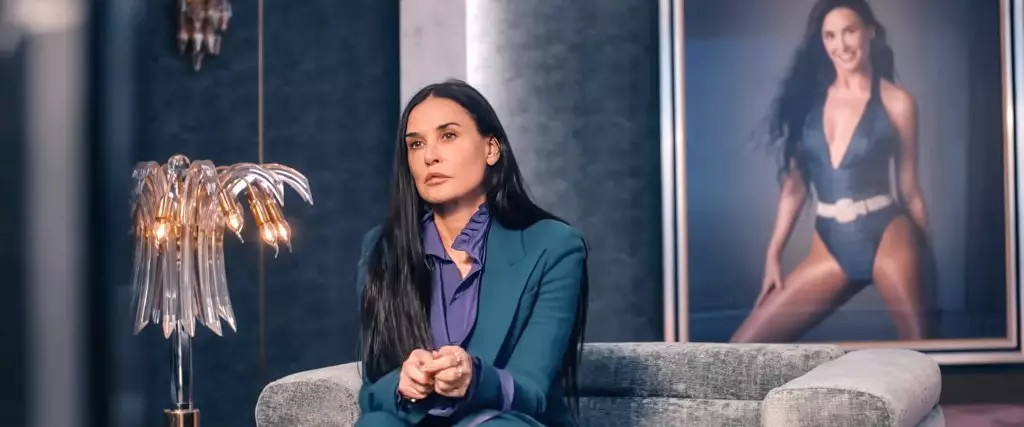The emergence of social media influencers has dramatically affected various entertainment sectors, including film. The recent release of “Sam and Colby: The Legends of the Paranormal,” a film featuring popular ghost-hunting YouTubers Sam Golbach and Colby Brock, is a compelling case that exemplifies this trend. Their successful theatrical run has not only captivated their fan base but also serves as a phenomenon worth analyzing as it relates to the broader landscape of independent film distribution.
Despite the general difficulties faced by independent films in breaking into mainstream success, “Sam and Colby” has managed to secure a remarkable position at the domestic box office, debuting at no. 6 with an estimated total of $1.76 million across 295 screens. This achievement reflects a carefully crafted plan by its creators to leverage their massive online followings into real-world sales. The film’s ability to resonate with audiences who are already familiar with their YouTube content demonstrates a unique intersection of social media clout and traditional cinema.
In an environment where social media stars often struggle to transition into serious filmmakers, Sam and Colby’s achievement is noteworthy. Their combined fan bases have converted their digital success into box office traction, a feat that is particularly rare in today’s entertainment landscape. This trend raises interesting questions about the evolving nature of celebrity and audience engagement, particularly in the context of the horror genre, where fan loyalty can play a critical role in a film’s success.
In “Legends of the Paranormal,” Sam, Colby, and their friend Nate delve into a notorious desert ranch famed for ghost sightings and extraterrestrial activity, merging the realms of urban legends with cinematic storytelling. The film is not merely an exploration of supernatural themes; it engages with a broad spectrum of human curiosity about the unknown.
Their investigations tap into a rich tapestry of folklore and the unsettling, tapping into the innate human desire to confront fears and explore mysteries. This format extends beyond mere entertainment; it becomes a shared experience. Audiences not only consume content but also partake in an interactive journey that ritualizes their engagement with the paranormal. By integrating their fan interactions—predominantly through social media platforms—into the film’s narrative, they create a dialed-in audience more invested than traditional viewers.
Alongside Sam and Colby, other indie films like Mubi’s “The Substance” and Sony Pictures Classics’ “The Outrun” demonstrate the resilience of independent cinema in an era dominated by blockbuster franchises. Mubi’s ability to sustain “The Substance” in the box office with a cumulative gross of nearly $10 million showcases the appetite for unique narratives, especially those featuring familiar faces like Demi Moore.
Furthermore, new releases such as these can coexist with the likes of “Saturday Night,” directed by Jason Reitman, which adds to the industry’s complexity. “Saturday Night,” based on the behind-the-scenes events leading up to the inaugural “Saturday Night Live,” also performed well despite being distinct from the shock-and-scare appeal of paranormal films.
Such variety emphasizes a shift within the film industry where independent stories—often characterized by strong character arcs and personal struggles—are finding a home alongside more commercial endeavors. The mixed results among indie films reveal an audience willing to explore diverse narratives while underscoring the varying methodologies of marketing and distribution in this complex ecosystem.
Reflections on the Future of Horror and Independent Film
The success of “Sam and Colby” embodies a significant moment for independent film, particularly within the horror genre. As they bridge the gap between digital and theatrical realms, they redefine audience expectations around celebrity and the kinds of stories worth telling. The film’s performance reflects a growing trend of fans willing to support creators they’ve grown to know through digital platforms.
Moreover, it poses significant implications for future projects within horror and other genres. As digital influencers explore new storytelling avenues, we may witness a wave of innovative content that challenges traditional cinematic norms and engages diverse audience segments. The industry may soon see a radical reorientation of storytelling, where platforms will inevitably matter less than the resonant narratives and familiar voices that can captivate viewers, ensuring that independent films continue to flourish amidst changing tides.
The intersection of digital celebrity and traditional film provides fertile ground for emerging storytellers, indicating a promising trajectory for the future of indie films and the horror genre alike.

